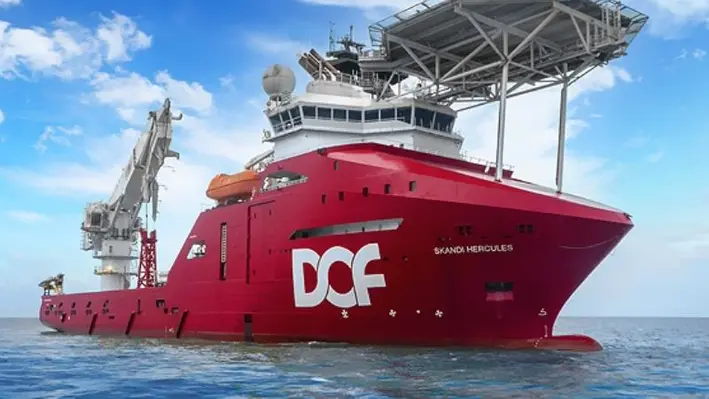

Woodside Energy Limited has awarded DOF Subsea Australia retrieval of Enfield XT and offshore support services.
The campaign will involve the recovery of 18 subsea XTrees, 18 flowbases and associated spool sections, one wellhead severance and recovery of up to 18 temporary guide bases at the Enfield Field, Australia. The contract includes project management, engineering, fabrication, and decommissioning services and is expected to be undertaken in Q3 and Q4 2022, using DOF Subsea’s MPSV Skandi Hercules.
Mons Aase, CEO of DOF Subsea AS, said this is a substantial contract award. "It builds on successful campaigns delivered in the past for our client and grows our decommissioning track-record in the APAC (Asia-Pacific) region. We look forward to working with Woodside Energy Limited to deliver a safe and efficient project."
D&A Aus 2022
From 10-11 May, the first ever Decommissioning and Abandonment conference will be arriving in Perth, Australia to provide the offshore community with the best blueprint for the wave of decommissioning projects on the horizon. For more information, download the brochure here: https://offsnet.com/da-aus/conference-brochure
Or contact:
Erin Smith
Global Accounts & Australasia Regional Manager
Offshore Network
t: +64 289 900 118
e:
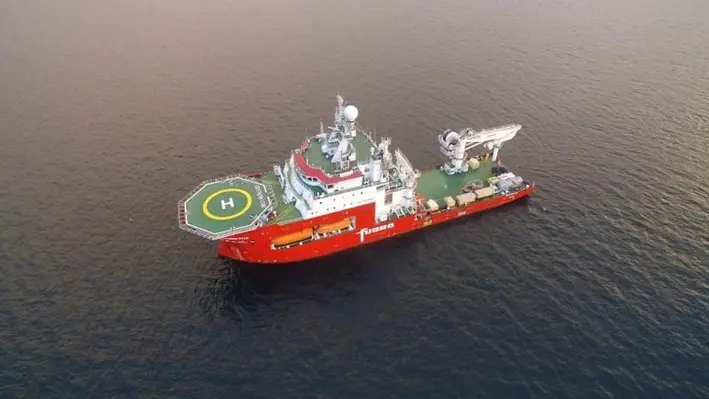

Shelf Subsea have announced that the Southern Star, DPIII Saturation Diving Vessel, has arrived in New Zealand waters to commence work on phase 2 of the Tui decommissioning project.
The New Zealand Ministry of Business, Innovation and Employment (MBIE) awarded the contract to Shelf Subsea for the removal of the subsea infrastructure from the Tui Oil Field (phase 2 of the decommissioning process). This is the next step in the decommissioning of the field after the disconnection and demobilisation of the FPSO Umuroa was completed in May 2021.
The Southern Star, a 112m vessel with a 150t AHC crane, 1000m of back deck and installed WROVs. It arrived in New Zealand after encountering some poor weather, which was easily overcome.
Shelf Subsea noted that it is the most advanced DSV operating in the Asia Pacific region and comes with Port and Starboard SPHLs for greater driver safety and more efficient operations in blow-on, blow-off scenarios. As demonstrated on the journey over, the vessel handles exceptionally well in challenging weather conditions providing a stable platform for subsea intervention work.
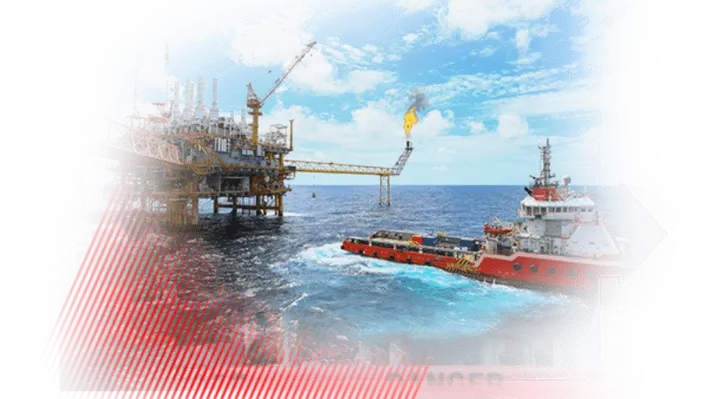

MR Deepwater Subsea LLC, part of the MR Group of companies, and Offshore Technical Compliance (OTC) LLC, have announced a formal collaboration between both companies to create a one-stop-shop for real time monitoring, digital pressure testing and BOP compliance services.
Through the global office network of the MR Group, OTC services are now available worldwide. The MR Group forms an independent centre of excellence, focused on improving the integrity of drilling rigs and helping clients enhance value of their wells across the well lifecycle. OTC is an industry leader in predictive digital pressure testing.
Mike Fry, Director of MR Deepwater Subsea, explained, “The collaboration with OTC is important for our clients. OTC is the ideal partner to offer our clients an integrated package of real time monitoring, digital pressure testing and BOP compliance services – all under one contract.”
OTC has developed their unique Greenlight digital pressure testing tool, which does not require benchmark testing to get a reliable test outcome but uses algorithms for predictions, which is BSEE-approved. The software and related equipment can be used for any type of pressure testing including surface and subsea well control equipment, inflow testing, casing tests, control lines, MPD equipment, and risers. Maintaining a very small footprint and with the ability to be operated remotely, the system can also capture multiple tests simultaneously.
The collaboration will help in building knowledge regarding inspection and testing data, equipment failure and wear & tear patterns which are unmatched in the industry. The worldwide office and resource network of the MR Group means OTC services are now truly available worldwide using a global pool of experts.
“The collaboration creates efficiencies for our clients, not only through a one-stop-shop but also in personnel on board,” OTC CEO Michael Bethea noted. “It also adds further digital technology development resources to the MR Group portfolio. We are excited about the future and our ability to add value to our clients.”
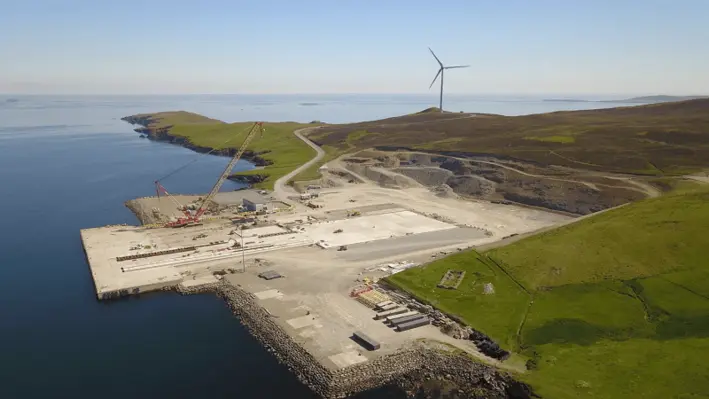

Following the award of another major North Sea contract to Veolia and Peterson, Lerwick Harbour will be the location for the dismantling and recycling of a northern North Sea platform jacket.
This follows the winning of the contract to decommission the 14,500 tonne topside for the same platform, which will be the biggest to date at the port’s Dales Voe Base. This was recently completed on time with Veolia and Peterson achieving their target of more than 98% of materials recycled.
The latest project has been awarded by Allseas and is for the 83-metre steel jacket which weighs in at around 8,500 tonnes. This will also be delivered by Allseas Pioneering Spirit.
Preparations are now underway for the reception of the jacket. Similar to the topside, it will be removed in a single lift before being transferred ashore at the base via a barge. A heavy-duty purpose-built decommissioning pad will be used.
John Abraham, COO of Veolia UK & Ireland – Industrial, Water & Energy, commented, “Industry leading recycling involves innovation and scrupulous planning. With our major complex decommissioning projects, we have already shown that it is possible to achieve a 98% recycling rate for obsolete oil and gas structures, a key achievement as we look to preserve resources and drive our ecological transformation. Decommissioning is also very important from a carbon perspective as recycling a tonne of steel saves 1.5 tonnes of iron ore and reduces CO2 emissions by 80%, compared to metal production from raw materials."
James Johnson, Decommissioning Manager at Peterson, remarked, “We believe this award demonstrates the strong track record of Peterson and Veolia in handling all types of offshore decommissioning projects, as well as the excellent capability of the Dales Voe Base. It is also recognition of the excellent work undertaken in the decommissioning of the Ninian Northern topside, where an industry first approach to decommissioning an offshore asset proved very successful. We are very pleased that the award will also help secure a number of Peterson roles on Shetland on an ongoing basis.”
The jacket is expected to arrive in April 2022 with decommissioning taking around eight months to complete from this point.
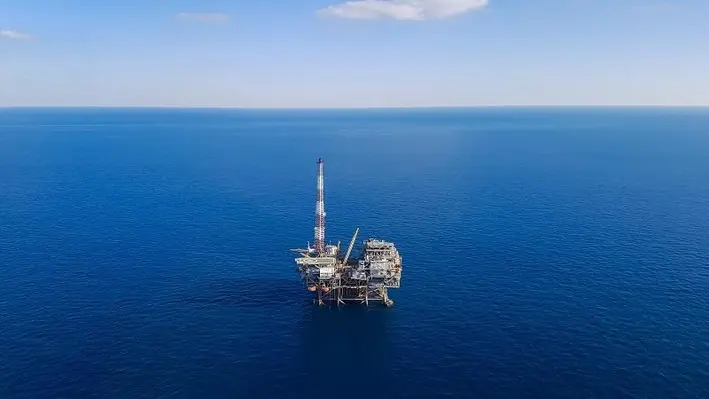

Baker Hughes has announced that it will be acquiring Altus Intervention, a leading international provider of well intervention services and down-hole oil and gas technology, to complement its existing portfolio of oilfield technologies and integrated solutions.
Altus Intervention employs around 1200 people globally and operates across four regions: UK and West Africa; Norway and Denmark; Americas; and Middle East and Asia Pacific.
“The addition of Altus Intervention supports our strategy to transform core oil & gas operations by enhancing technological capabilities and providing customers with higher-efficiency solutions,” commented Maria Claudia Borras, Executive Vice President of Oilfield Services at Baker Hughes. “We value the Altus Intervention team’s deep expertise and look forward to bringing these fully integrated well intervention solutions to our global customer base.”
Åge Landro, CEO of Altus Intervention, added, “Our technology and techniques play a critical role in improving production, well intervention and plug and abandonment, and we believe this agreement with Baker Hughes is the right step forward.
“We are focused on a long-standing vision of making intervention smarter to deliver real change operationally and commercially, and we look forward to leveraging Baker Hughes’ strong network, complementary technology and global infrastructure in the oil and gas industry.”
The transaction is expected to close in the second half of 2022. The acquisition agreement includes all intellectual property, personnel and commercial agreements.
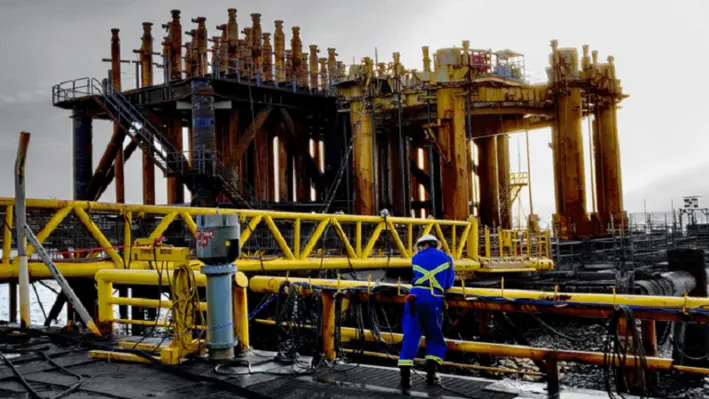

Claxton, the lead brand of Acteon’s drilling and decommissioning segment, is set to acquire decommissioning personnel and assets from Oceaneering.
The agreement was signed recently with the anticipated closure date of 30 March, 2022. Certain staff in Norway will transfer to Claxton, along with decommissioning assets, including well and pile abrasive cutting and recovery systems and associated tooling. Also included in the deal are conductor drilling, pinning and cutting systems, diamond wires saws, dredges and various ancillary equipment items. This equipment will initially be deployed from Acteon’s bases in Norway, Dubai and Aberdeen.
In addition, Oceaneering is establishing a master services agreement where Claxton will provide services to support the company’s wider scopes. This could potentially include its multi-client Rig Chase decommissioning campaigns.
Sam Hanton, Acteon Drilling and Decommissioning Segment Managing Director, commented, “The deal will increase our capacity, the range of technologies at our disposal and our decommissioning expertise, and reinforce Claxton’s position as one of the leading global suppliers of offshore cutting services.”
Luke Pirie, Director of Offshore Projects Group, Oceaneering, added that the deal allows the company to strategically focus on its integrated solutions offering while ensuring access to decommissioning services through a partnership and the new master services agreement with Claxton.
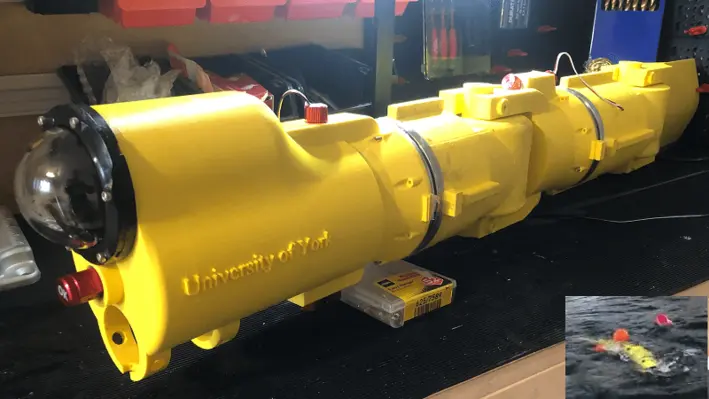

Verlume, a leader in intelligent energy management and storage technologies for the energy industry, and a consortium of partners have progressed on the development of an autonomous underwater robot that moves like a fish for offshore inspections.
The agile biomimetic autonomous underwater vehicle (AUV), named ‘RoboFish’, is made up of several self-contained modules with self-managed battery and actuator control for full-body, autonomous movement around underwater structures. It is capable of operating in harsh and hard-to-reach environments.
With the limited accessibility, manoeuvrability and environmental impact of remotely operated vehicles (ROVs) and some larger AUVs, inspection of structures in the underwater environment is complex, expensive, and reliant on human input.
The first RoboFish prototype was completed in summer 2020 and research to improve it and apply it to new applications is ongoing. Two conference papers and a journal paper have been published on the RoboFish prototype, with another journal paper due to be published this year on control of the swimming gait with machine learning.
Dr. Mark Post, Lecturer in Electronic Engineering at the University of York, commented, “Through the use of innovative electronics, actuation, networking technology and additive manufacturing techniques, we have been able to develop a modular robot that can move very precisely in challenging offshore environments. The collaborative contributions of many partners have been instrumental in creating a practical platform to further develop robotic technologies in this field.”
Verlume is playing a key role in the project, assisting with the development of an intelligent power solution for RoboFish. The company will supply an underwater power system for charging, as well as an integrated intelligent battery management system.
Paul Slorach, Business Development Director at Verlume, said, “With an increasing focus on decarbonisation and the automation of high-risk underwater tasks in the so-called Blue Economy, RoboFish is an example of how these operations can be revolutionised. We are pleased to act as the industry gateway for our academic partners in this project and share our expertise to integrate Verlume’s intelligent battery system as the power solution for RoboFish.”
RoboFish was initially devised by researchers at the University of York, Department of Electrical Engineering and the University of Strathclyde, Department of Naval Architecture, Ocean & Marine Engineering with grant support from the EPSRC Supergen Offshore Renewable Energy Hub.
The RoboFish research consortium was formed of partners Verlume, The University of York, The University of Strathclyde, PicSea Ltd, the Supergen ORE Hub, and the Offshore Renewable Energy Catapult. Through outreach activities, the consortium is expanding.
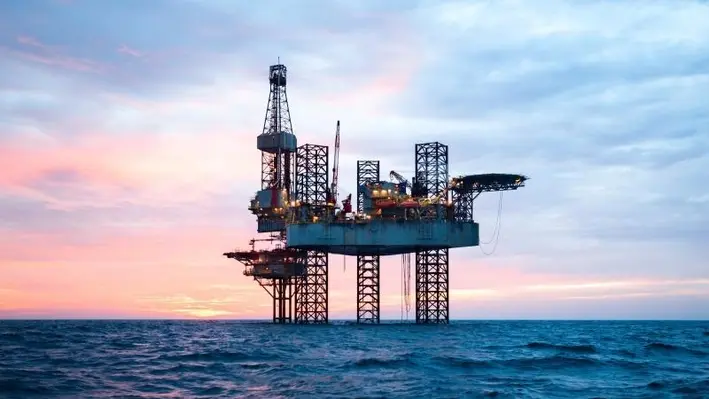

Expro, a provider of energy services, has acquired 100% of Distributed Fiber Optic Sensing (DFOS) company, SolaSense Ltd.
Based in the UK, SolaSense’s well surveillance technology features portable processing software and an enhanced visualisation interface for delivering near-real-time analysis of distributed acoustic sensing (DAS) / distributed temperature sensing (DTS) data at the well site. This allows well characteristics to be readily recognised and evaluated, avoiding the shut-in of wells for extended periods and minimising lost production.
This acquisition along with Expro’s 50 years of well intervention and integrity experience, will allow the company to meet industry demand to provide customers with a one-stop-shop service for the in-depth evaluation of the entire well and also the provision of any subsequent remediation solutions. Expro’s DFOS offering monitors dynamic behaviour in the well, providing a health check of the well and an accurate diagnosis of any well and reservoir issues.
Compared to traditional completion deployed applications of fibre optic technologies, DFOS can be deployed thru-tubing and used to analyse and evaluate well performance and integrity within hours of the completion of the survey providing greater insight into the dynamic behaviour of the well, to help customers make important time-sensitive decisions. Supported by DFOS, it can provide an enhanced cased hole offering integrated slickline mechanical services all within Expro.
Steve Russell, Expro’s Chief Technology Officer, commented, “We are committed to delivering cost-effective, innovative technologies and solutions, and best-in-class safety and service quality performance to our customers, all while advancing our commitment to creating a more sustainable business and lower carbon future.
“Access to representative well data is key for making informed well performance and integrity decisions. This acquisition allows us to build on our existing well intervention and integrity portfolio, leveraging the expertise from both companies to extend our customer’s wells’ lifespan, while reducing time and costs. Led by a highly skilled and dedicated team with extensive industry experience, we look forward to building on our digital solutions and welcoming the SolaSense team to the Expro family,” he added.
John Davies, SolaSense CEO, said, “The SolaSense ambition has always been to see distributed fibre optic logging being used widely as a simple and affordable means of well performance and well integrity monitoring. The integration of SolaSense’s technology and expertise into Expro’s existing global well intervention footprint will fast track the realisation of this ambition, and more importantly, add value for the end customers through the wider uptake of fiber-enabled slickline deployed DFOS surveys. The SolaSense team are very excited about this significant development and look forward to supporting Expro in the fast and efficient expansion of DFOS well logging.”
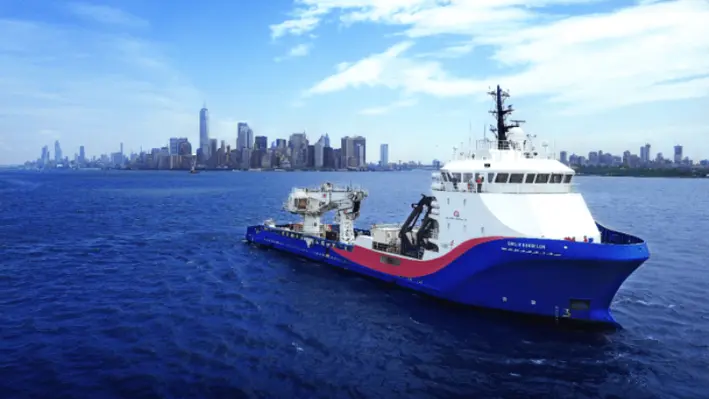

Helix Robotics Solutions, the US Robotics division of Helix Energy Solutions Group, has entered into a one-year agreement with Bordelon Marine, LLC for the charter of the DP2 Jones Act-compliant Ultra-Light Intervention Vessel (ULIV) M/V Shelia Bordelon.
While Helix expects the vessel to primarily support Inspection, repair and maintenance (IRM) operations for clients operating in US waters, it can support international work as well.
Designed as a fuel-efficient intervention vessel, the Shelia Bordelon features an NOV 50-tonne active heave compensating crane with 3,000 metres of wire, a mezzanine deck with internal offices, centralised online survey suite, offline data processing space, and two Triton 200hp ROVs with high spec survey capabilities.
With over 25 years of IRM expertise, Helix Robotics Solutions is well equipped to service clients’ light construction and renewables projects. The company performs subsea well interventions through wireline, coiled tubing, or hydraulic stimulation at project costs significantly lower than drilling rigs, with the versatility to perform both riser-based and riserless interventions.
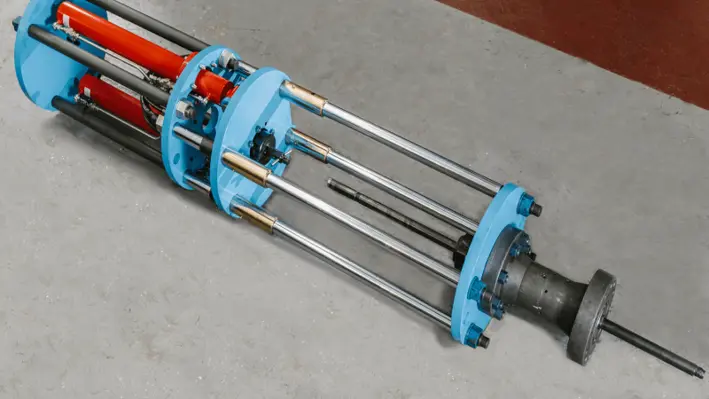

Unity, a provider of well integrity solutions, are supporting a North Sea well decommissioning programme for a major international operator, using its multifunctional Surface Intervention System (SIS).
The SIS has already completed intervention work on the first well, where it was deployed offline to set a shallow bridge plug in preparation for the removal of wellhead equipment. Unity’s standalone technology replaced the need for traditional intervention equipment. It delivered considerable savings to the operator in cost, time and efficiency, by working below deck while plug and abandonment (P&A) drilling operations were ongoing. Compared to traditional methods, the intervention was performed around 60% faster and delivered a cost and personnel package saving of 66%.
During the project, deck space and bed space were limited due to drilling operations, but Unity’s compact SIS technology, which requires just two technicians to operate, provided the ideal shallow intervention solution. The SIS was also said to be easy to accommodate on the platform below the drilling rig in a restricted well bay. The SIS and pressure control package were rigged-up below deck using a small A-frame crane provided by Unity. The plug was set first time and the equipment was rigged down within 24 hours.
Gary Smart, CEO at Unity said, “The SIS has great utility and has been by used several operators for milling, inspection, fracturing and P&A operations, enabling material savings against traditional shallow well intervention techniques. This technology will soon be joining our newly-announced Compact Shear Seal Valve technology, reducing the footprint and weight of the overall system even further.”
The SIS is the first multifunctional shallow well intervention system on the market and combines heavyweight capability within a compact and mobile package. The SIS has a powerful hydraulic motor, driving a push, pull and rotate function which can rival wireline or coiled tubing capability.
Unity has established an impressive well decommissioning project track record which currently extends to over 150 wells with another 230 in the pipeline over the next three years.
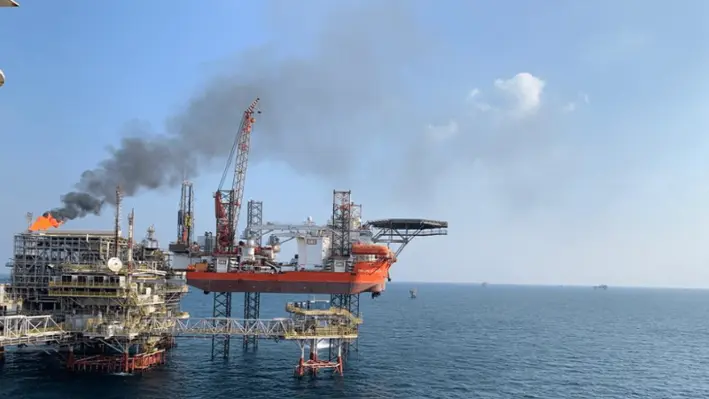

Jordan Whyte, Head of Commercial & Business Development at Gulf Marine Services (GMS), explained to Offshore Network how the company is facilitating more efficient heavy well intervention operations to save time and costs.
In the Middle East, attention is firmly fixed on increasing production. While the energy transition has threatened to shake confidence, key players have reaffirmed their faith in the oil and gas market in the years ahead by looking to increase production – Saudi Arabia’s Aramco has signalled its intention to increase oil production to 13mn bpd (up from 12mn bpd) and ADNOC is aiming to boost capacity to 5mn bpd (up from 4mn bpd).
Within the region, Whyte explained, one of the most favoured ways of increasing production is to workover existing wells using the likes of jack-up barges to re-stimulate wells in shallow waters. It is for this reason that of the 12 barges GMS currently has in the Middle East, around half are presently engaged in some form of well service operations (there is another barge in the North Sea working in renewables).
“Covid-19 dramatically delayed a lot of contracts of course but, subsequently, these have been reactivated. Now it is in overdrive, driven by these production targets and allied to the large population of existing shallow water platforms; the simplest and most efficient ways to reach these is by using jack-up barges. While we are not downhole engineering experts, we are the medium to carry out these operations and currently have high utilisation levels due to the production boom,” Whyte said.
GMS’ Evolving Capacity
Standing apart in GMS’ fleet is the Evolution self-propelled, self-elevating well intervention barge which was commissioned back in 2017. Fitted on board is the bespoke cantilever workover system, delivered in collaboration with Norwegian-based Dwellop.
This unit skids hydraulically from the main deck of the barge out of the back end for the best part of 50 ft; has a light weight drilling derrick that comes complete with top drive system; and has a high level of automation such as a pipe handling system that will pick pipe up off the deck and feed into the top drive before running in hole. There is also an automated iron roughneck on board and everything is run from a driller’s cabin on the side of the unit so that pipe can be tripped in and out of the well at significant speeds (up to 1,000 ft an hour). Below the deck is also a full Mud System with everything normally associated with a drilling rig; enhancing the vessel’s capacity.
Whyte remarked, “In a sense it is very similar to a jack-up rig but it is a hell of a lot lighter and thus can skid out over a platform much faster (typically only 30 minutes). There is some transverse movement which means we can also skid left to right in order to workover adjacent wells without having to necessarily move the barge itself. When we do have to skid back, rig down and move elsewhere, we can typically do so and be ready to work at another location within 24 hours. This is significantly faster than a jack-up rig for example which can take the best part of two to three days and even more if the weather is poor. Not to mention the fact no tug-boats are required to get it to the next location due largely to our clients comfort operating Evolution in DP-2 mode when approaching platforms. As a result, the Evolution can workover up to three or four times as many wells per year compared to a typical non-propelled drilling jack-up in any given field.”
“We are trying to bring down the costs of all brownfield workover operations and the Evolution offers flexibility and cost saving due largely to the superior marine efficiencies.”
The Evolution was purpose built for P&A and workover scopes but can also perform some drilling operations. Whyte noted that it is really only limited by the amount of tubular piping that can be carried on deck (and a few others such as top drive torque capability and hook load) and the 200t crane on board means it even has the ability to remove small jackets although that has not been done to date.
In once case study provided by GMS, the Evolution was contracted by an Arabian Gulf NOC for a well intervention scope covering various operations. The barge jacked up alongside a similar vessel to transfer well services equipment (which was moved across and commissioned in a record two days) before sailing to the platform tower, jacking up and deploying the cantilever system. The unit was ready to commence operations with three hours (saving 90% rig time) and rig up of well services equipment was completed in 31 hours (achieving 15% time saving). Following this, rig down of well services and preparation for the barge to move was completed in just 14 hours.
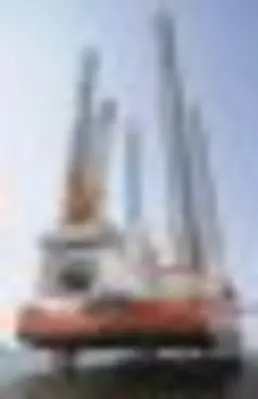
On the Horizon
Currently the Evolution is performing legacy work for Qatar Energy (QE) on a field which was previously operated by Occidental Petroleum for around 25 years. The former owners used a more traditional method of workover which QE continued until GMS suggested that the Evolution would be more efficient. In the 18 months since then, the Evolution has been proving its worth and this is without even reaching its full potential.
“In truth we are not even at the stage where we are using Evolution at 100% of her capability but we are certainly working towards that. As it gets more tried and tested and both the crew and client gains confidence, we will be more prepared to tackle more difficult workovers and remediation projects. But it is fair to say that, so far, it is going well and QE appreciate the marine efficiencies being achieved,” Whyte noted.
Pushing, the Evolution to greater heights is just one of the targets on the horizon for GMS, Whyte continued. The company has recently taken a big step in its digital journey by signing a contract to install an enterprise resource planning system which will provide the company with an interconnected system across its operations, giving it the ability to upgrade internal procedures; integrate vessel operations, maintenance, procurement and inventory control, alongside crew and payroll management; and centralise data for better visibility. Whyte surmised that while it will not be fully up and running for a couple of months yet, the company has already started to feel the benefits (most notably in the real-time communication between offshore and onshore) which is a promising sign for the digital road ahead.
Another exciting development is through the delivery of a lighter cantilever system which the company is looking to push across the line for commercial use. This is, as it says on the tin, a lighter version of the system which can be used for all well services which do not require tubing to be pulled from the well.
Whyte said, “It can skid out just as far and can be retrofitted to existing vessels. There is a lot of interest from NOCs for this and we are looking for more opportunities for the cantilever system and its lighter cousin. As the rig rates continue to rise and move away from barges, we think our offerings will become increasingly more attractive to operators for both heavier and lighter workover operations.”
Finally, Whyte concluded by noting that the company is keeping an eye on other regions for which its fleet could be deployed with regard to well service and workover operations.
“West Africa is finally waking up to well servicededicated barges; in the North Sea there is some increased activity in terms of P&A; and there is interest from regions such as Asia and Australia to bring in some of our barges. The Evolution is capable of operating anywhere with water depth of around 70m and has proved herself in other regions such as the North Sea before,” Whyte continued.
“We put no barriers on where we work as long as the economics work out. That being said, such is the boom and demand here that, at the moment, we are very focused in the Middle East region. The Evolution itself has been working in Qatar for the last two years and fingers crossed we expect her to continue there for some time.”
OWI ME 2022
GMS will be speaking further on this at OWI ME 2022 on the 28-29 March 2022 in Dubai, UAE. Register here or reach out to Rachael Brand on the details below for more information:
Rachael Brand
Project Manager, Offshore Network
t: +44 (0) 20 3409 3041
e:
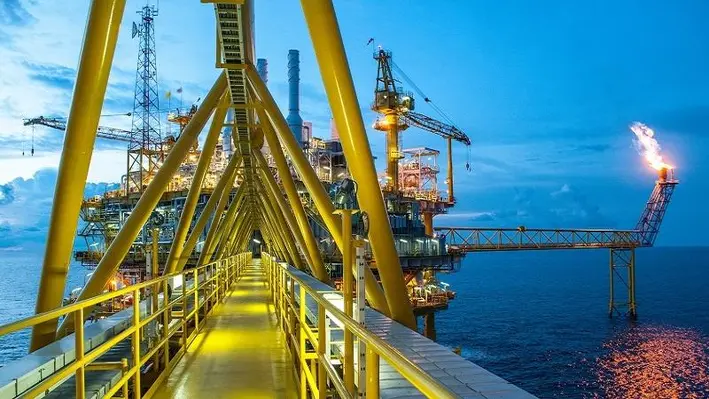

Spirit Energy Production UK Ltd. has awarded Heerema Marine Contractors a contract for removal and disposal services of the operator’s North Sea decommissioning portfolio.
The EPRD (engineering, preparations, removal, and disposal) contract includes both firm work and optional scope that can be called-off by the client. Heerema Marine Contractors will lead its part of the work out of its offices in Leiden (NL) and London (UK). Heerema will cooperate with DeepOcean, the subsea asset removal contractor, to deliver the safe and sustainable decommissioning of the platforms.
The firm scope involves the EPRD of the Audrey A, Audrey B and Ensign platforms, while the optional work includes an additional five platforms in the southern North Sea region of the UK and Dutch sectors.
Following a joint tender submitted in cooperation with DeepOcean Subsea Services Limited, both firms have secured contracts that will be executed under a tripartite collaboration agreement.
Heerema’s scope is to remove and recycle the platform topsides and substructures, while DeepOcean will be responsible for removing and recycling all subsea assets at the relevant fields. The combined weight of the firm scope topsides and jackets is around 7000 metric tons, and will be recycled in the UK. The platforms are located between 23-26 metres of water.
Heerema’s Decommissioning Director, Michel Hendriks, commented, “Decommissioning North Sea platforms is an important component within Heerema’s portfolio, and we are proud to be Spirit Energy’s chosen contractor for the topside and substructure scope. We are also looking forward to working alongside DeepOcean and their team to deliver the safe and sustainable removal of the Audrey A, Audrey B, and Ensign platforms.”
Page 82 of 110